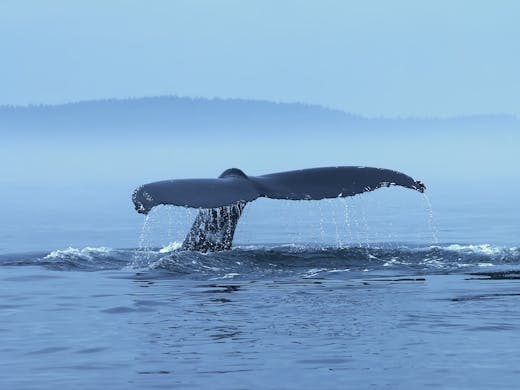Humpback Whale Megaptera novaeangliae
The humpback whale is a species found in all oceans, migrating up to 25'000 km each year. Humpbacks feed in polar waters and mate and give birth in tropical and subtropical waters.
Specs
| Length | 12-15m |
| Weight | 22.7-36.3t |
| Lifespan | 45-50 years |
Common Names
| German | Buckelwal |
| English | Humpback Whale |
| French | Baleine à Bosse |
| Spanish | Ballena jorobada |
Taxonomy
| Order | Artiodactyla |
| Suborder | Cetacea |
| Family | Balaenopteridae |
| Species | Megaptera novaeangliae |
Advertisement
We need your help! By making a contribution towards our hosting costs, you can help us provide an ad-free experience on our website in the near future. Paypal
How to Identify
If lucky, I see them breaching the water surface and with a glimpse on their long, uniquely shaped, thin pectoral fins they are easy to identify. Also, the way how they jump and fall back is a good clue. If they surface only to breath, the small dorsal fins and the characteristic display of the tail fin are hints.


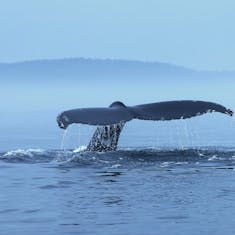


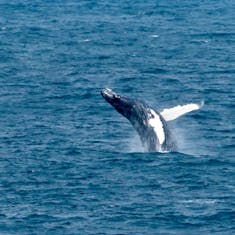

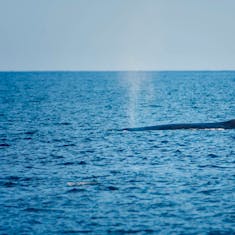
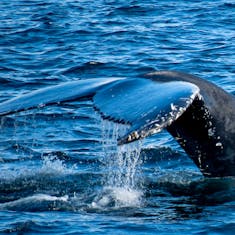
Humpback Whale Trivia
Does the Humpback Whale have teeth?
No, it does not. Humpback whales are baleen whales, which means they have plates made of keratin in their mouths that act as filters to trap small prey like krill an d fish.
Is the Humpback Whale the largest whale species?
No, it is not. While this whale species can grow to between 15 and 19 meters in length and weigh approximately 40 tons, they are overshadowed by the blue whale, which can reach over 30 meters in length and weigh more than 150 tons.
Does the Humpback Whale live in all oceans?
Yes, indeed. This whale species has a global distribution and can be found in tropical, temperate, and polar waters. It migrates seasonally between feeding grounds in colder regions and breeding grounds in warmer regions.
Does the Humpback Whale have the longest flippers of any whale?
Yes, it does. This whale species has long and slender pectoral fins that can grow to nearly 5 meters in length, accounting for about one-third of the whale's body length. These flippers aid in maneuvering and balance in the water.
Does the Humpback Whale sing only during mating season?
No, not exclusively. Humpback whales are renowned for their intricate and melodious songs, which can last for hours and vary across populations and regions. While they sing primarily during the breeding season, they can also sing at other times of the year for reasons that remain unclear.
Does the Humpback Whale eat only krill?
No, it does not. This whale species is an opportunistic feeder, meaning it can adapt to different food sources depending on availability and location. While it mainly consumes krill, it also includes small fish, squid, octopus, and even salmon in its diet.
Does the Humpback Whale travel alone?
No, it doesn't. Humpback whales are social creatures that form temporary groups called pods. These pods can range from just a couple of individuals to more than 20, and their composition can change frequently. Pods may cooperate in activities such as feeding, mating, or defending against predators.
Does the Humpback Whale mate for life?
No, it does not. This whale species is promiscuous, which means they have multiple partners throughout their lives. Males compete for females through behaviors such as singing, displaying, and fighting.
Is the Humpback Whale endangered?
No, it is not. Humpback whales were once hunted to the brink of extinction, but thanks to conservation efforts and international agreements, their populations have significantly recovered.
Does the Humpback Whale sleep?
Yes, it does. Humpback whales sleep by resting half of their brain at a time while keeping the other half awake. This allows them to maintain some level of awareness and control over their breathing and movements.
Does the Humpback Whale have a dorsal fin?
Yes, it does. Humpback whales have a small, curved dorsal fin on their backs, which helps them steer and stabilize in the water. The shape and size of the dorsal fin can vary among individuals and populations.
Does the Humpback Whale have predators?
Yes, it does. This whale species faces natural threats from orcas and large sharks. Additionally, humpback whales are vulnerable to human-related threats such as entanglement in fishing gear, ship strikes, noise pollution, and the impacts of climate change.
Where and When to Spot
I saw them on a boat trip near Tadoussac in the middle of Saint Lawrence River, and frequently from the beach along the coast near St. John's, NL where they can get pretty close to the beach.
| Spring | Summer | Fall | Winter | |
|---|---|---|---|---|
| Saguenay St. Lawrence Marine Park | - | x | - | - |
Where and when a species has been observed, identified, and recorded.
